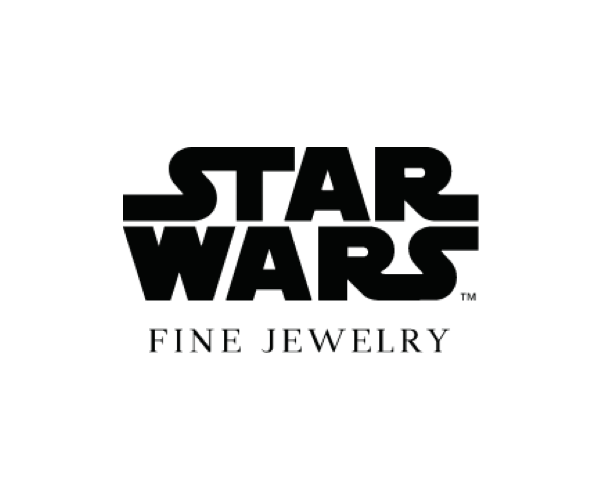“Done is better than perfect.”
Selling online is not easy, you do not expect one to do it with no mistakes.
We created a compilation of common mistakes jewelers make while selling jewelry online. Why 71? Read to the end and find the answer. :)
- Starting to execute without a clear understanding of the high-level strategy, and role of eCommerce for the specific jewelry business. Ecommerce comes to extend the existing operation, and not to replace one.
- No understanding of all the Jewelry eCommerce components, sales channel specifics, and skills required to create an effective eCommerce business. The go-to-market strategy and the applied tools will drastically change between the small family-owned company, a large gold jewelry manufacturer, an established brand with offline presence, and a B2B manufacturing company.
- Starting the execution with no dedicated, skilled person to own the eCommerce business in the company. This should not always imply a full-time job, but there must be a person who owns the direction.
- Setting no clear, measurable goals or timeframe for starting and measuring the results, which all relevant people in the organization approve. This should include the whole spec of timelines from 3 years down to 1 month.
5. Not updating the online jewelry catalog constantly. Jewelry trends change, and so should your online jewelry catalog. Not updating your online catalog is a clear path to losing relevancy and sales.
6. Insufficient online catalog. Similar to having a decent display indoor brick-and-mortar store, your online store should provide a variety of products. Making a sale in a 50-item store is much more complicated than in a store with 200-300 items. because of the higher variability of jewelry products, it is not uncommon to have 10.000 and even 500.000 SKUs in the online catalog.
7. Using the same catalog for all sales channels. The online catalog has to be adjusted to your target audience. Your website or Amazon store might target buyers different from your social stores. This means your online catalog should be adjusted to the buyers’ group you’re targeting.
8. Non-verified catalog. Especially when moving business from offline to online, it’s critical to check if your jewelry matches the online selling. It’s not obvious that your in-store bestsellers will perform well online. Verify your products, normally with paid advertising.
9. No virtual catalog was implemented. Online purchase doesn’t require you to have the jewelry ready at the moment. Prepare the relevant information about the jewelry – and boost your sales.
5. Not updating the online jewelry catalog. Jewelry trends change, so should your online jewelry catalog. Not updating your online catalog is a clear path to losing sales opportunities.
6. Insufficient online catalog. Similar to having a decent display indoor brick and mortar store, your online store should provide a variety of products. Making a sale in a 50 items store is
much more complicated than in a store with 200-300 items. because of the higher variability of jewelry products, it is not uncommon to have 10.000 and even 500.000 SKUs in the online catalog.
7. Using the same catalog for all sales channels. The online catalog has to be adjusted to your target audience. Your website or Amazon store might target buyers different from your social stores. This means your online catalog should be adjusted to the buyers’ group you’re targeting.
8. Non-verified catalog. Especially when moving business from offline to online, it’s critical to check if your jewelry matches the online selling. It’s not obvious that your in-store bestsellers will perform well online. Verify your products, normally with paid advertising.
9. No virtual catalog extension. Online purchase doesn’t require you to have the jewelry ready at the moment. Prepare the relevant information about the jewelry – and you’re good to boost your sales.

10. Dedicated stock for each sales channel. One of the main advantages of online sales is the option of offering the same jewelry on multiple sales channels. Allocating jewelry for a specific channel will inevitably lead to a loss of opportunity. Implement stock synchronization to avoid overselling and increase your offering on each sales channel.
11. Manual stock synchronization between channels. Overselling mistakes is the most common and painful, and at the same time, they can be easily avoided. Adopt proper jewelry software for syncing your online stock – and improve your sales, customer satisfaction, and quality of your sleep.
12. Treating online sales in the same way as offline sales. Selling jewelry online provides additional opportunities, such as virtual (made-to-order) inventory, multiple stock locations, variations, and more. Make sure you clearly understand what jewelry eCommerce can offer you, and implement these gradually.
13. No instant control over the inventory. Online sales are dynamic. This requires you to have full control over the inventory at any given moment. Make sure to implement the technology for inventory control to stay on top of things.
14. No sync between in-store inventory and online inventory. Make sure your offline purchases are reflected in your online channels instantly and automatically.
10. Dedicated stock for each sales channel. One of the main “miracles” of online sales is the option of offering the same jewelry on multiple sales channels. Allocating jewelry for the specific channel will inevitably lead to loss of opportunity. Use stock synchronization to avoid
overselling and increase your offering on each sales channel.
11. Manual stock synchronization between channels. Overselling mistakes are one of the most common and painful, and on the other side – can be simply avoided. Adopt proper technology
for syncing your online stock – and improve your sales, customer satisfaction and quality of your sleep.
12. Treating online sales in the same ways as offline sales. Selling jewelry online provides additional opportunities, such as virtual (made per order) inventory, multiple stock locations, variations, and more. Make sure you clearly understand what online business can offer you, and
implement these gradually.
13. No instant control over the inventory. Online sales are dynamic, this requires you to have full control over the inventory, at any given moment. Make sure to implement the technology for
inventory control, to stay on top of things.
14. No sync between in-store inventory and online inventory. Make sure your offline purchases are reflected in your online channels catalogs, instantly and automatically
.

15. Non-structured product information. It’s nice to have a poetic paragraph about your jewelry , but in order to sell jewelry online efficiently, you definitely want to present it in a simple, structured form. A clear table with jewelry specifications will answer most of your buyer’s questions.
16. Confusing technical information of the product with commercial information required to sell jewelry online. Having 20 technical parameters of the jewelry on the website doesn’t mean you’ve covered the required dataset. The online jewelry information should include commercial information (prices, discounts), including emotional aspects (f.i. Relation to the current season), descriptional information (style, shape, special features), and offer-related information (logistics, payment, returns etc)
17. Insufficient product specifications. Selling online means selling information. Having 2 product parameters on the product page means you’re not ready.
18. Forgetting promotional media. Promotional/seasonal images do not necessarily relate to the specific jewelry but describe the potential buyer the opportunity. The importance of such images is huge, especially in the jewelry purchased as a gift, where the buyer is not going to use the jewelry by himself.
19. Wrong understanding of the required product information. This should cover not only the technical details of the jewelry but also the commercial details: why buy this specific jewelry, why buy from you as a seller, and many other parameters. So, if you sell jewelry on eBay, Amazon, your Shopify website or other sales channels, this will require a totally different set of information to succeed.
20. Missing information about the product offering. When selling jewelry online, you sell not only the product but the complete offer. Make sure to include information about shipping, sourcing, handling, service, warranty, special opportunities close with the product.
21. Wrong understanding at which stages of the online sale the information is required. Don’t assume the information is required only when uploaded to the website; it’s your main asset during the sale process and in the after-sales customer service.
22. Trying to prepare “all the needed” information at the beginning. Way to failure. First, as you start, you do not fully know what information will be required. In addition, some information is order-related and unique. The only reliable way is to create the process of constantly generating the information as additional inquiries appear.
23. Having no processes for creating the jewelry information. The whole company should be involved in generating and improving the information.
24. Having no single “source of truth”. All information should be organized in one central database, jewelry ERP, available for all company teams. on all stages of the online business and behind it. It is important to organize the flow of information in the company and synchronization on all sales stages (website, sales process, after sale customer support)
25. Wrong storage of product measurements. Store the measurement units separate from their values. So, while storing the wring 4mm width shank, the value “4” should be stored separately from the “mm” unit. This allows correct use of the information in the online assets and quick conversion into different UOMs (f.i. inches, millimeters etc).
15. Non-structured product information. It’s nice to have a poetic paragraph about your jewelry , but in order to sell jewelry efficiently, you definitely want to present it in a simple, structured form. A clear table with jewelry
specifications will answer most of your buyer’s questions.
16. Confusing technical information of the product with commercial information required to sell jewelry online.
Having 20 technical parameters of the jewelry on the website doesn’t mean you’ve covered the required
dataset. The online jewelry information should include commercial information (prices, discounts), including
emotional aspects (f.i. Relation to the current season), descriptional information (style, shape, special features), and offer-related information (logistics, payment, returns etc)
17. Insufficient product specifications. Selling online means selling information. Having 2 product parameters in the product page means you’re simply ready.
18. Forgetting promotional media. Promotional/seasonal images do not necessarily relate to the specific jewelry
but describe the potential buyer the opportunity. The importance of such images is huge, especially in the jewelry purchased as a gift, where the buyer is not going to use the jewelry by himself.
19. Wrong understanding of the required product information. The required information should cover not only technical details of the product but also the commercial details: why buy this specific jewelry, why buy from you as a seller, and many other parameters.
20. Missing information about the product offering. When selling jewelry online, you sell not only the product but the complete offer. Make sure to include the information about shipping, sourcing, handling, service, warranty, special opportunities close with the product.
21. Wrong understanding at which stages of the online sale the information is required. In many cases, jewelers assume
22. Trying to prepare “all the needed” information at the beginning. Way to failure. First, as you start you not fully know what information will be required. In addition, some information is order-related and unique. The only reliable way is to create the process of constantly generating the information, as additional inquiries appear.
23. Having no processes for creating the jewelry information. All the company should be involved in generating and improving the information.
24. Having no single “source of truth”. All information should be organized in one central database, available for all company team. on all stages of the online business, and behind it. It is important to organize the flow of
information inside the company, and synchronization on all sales stages (website, sales process, after sale,
customer support)
25. Wrong storage of measurements. It is important to store the measurement units separate from their values. So, while storing the wring 4mm width shank, the value “4” should be stored separately from the “mm” unit. This
will allow correct use of the information in the online assets, and quick conversion into other measurement units (f.i. inches in our case)

Jewelry Media
26. Insufficient product media. Have 1 image of the jewelry? Improve it. Can create the video? Definitely an
advantage. 360 view technology – add 10-15%, and in some cases 50% to your online sales.
27. Outsourcing media creation. Ultimately, photos and videos for jewelry eCommerce should be created in-
house. In addition to fixed images, additional images might be requested during the sales process, or for
other reasons. Therefore, the ability to quickly provide additional media is important, to move processes
forward.
28. Wrong quality Vs quantity balance. Jewelers are being attached to their products, and agree only to the high-
end product images, which are not always needed Creating high quality images is expensive. In many cases
this causes that the images aren’t created at all.
29. Lack of on-model photography. Jewelry is a wearable product, means the photography on the body is
important, increases conversion and reduces churn.
30. Lack of impression photos – styled photography. Besides creating the right mood and improving the
conversion rates, these create identifiable images add the ability to quickly associate the image on external locations and create brand awareness.
31. Inability to create jewelry photography during the sales process. These images do not have to be perfect as
the catalog images.
26. Insufficient product media. Have 1 image of the jewelry? Improve it. Can create the video? Definitely an advantage. 360 view technology – add 10-15%, and in some cases 50% to your online sales.
27. Outsourcing media creation. Ultimately, photos and videos for jewelry eCommerce should be created in-house. In addition to fixed images, additional images might be requested during the sales process, or for other reasons. Therefore, the ability to quickly provide additional media is important, to move processes forward.
28. Wrong quality Vs quantity balance. Jewelers are being attached to their products, and agree only to the high-
end product images, which are not always needed Creating high quality images is expensive. In many cases
this causes that the images aren’t created at all.
29. Lack of on-model photography. Jewelry is a wearable product, means the photography on the body is
important, increases conversion and reduces churn.
30. Lack of impression photos – styled photography. Besides creating the right mood and improving the conversion rates, these create identifiable images add the ability to quickly associate the image on external locations and create brand awareness.
31. Inability to create jewelry photography during the sales process. These images do not have to be perfect as the catalog images.
32. Not adjusting your logistics to your jewelry. For example: while unique designer jewelry is tolerant to complex logistics, strong logistics is critical for fashion jewelry.
33. Failure to stand within the defined handling times. This means disappointed customers, for quite sure. And with
no doubt, this will negatively affect your ranking on any of the sales channels.
34. Not offering free shipping. Whenever possible, include it in the price. In fine, diamond, engagement jewelry free shipping is a must
35. Not offering multiple shipping options. Give buyers better choice, not only in products but how they will get the
mites delivered to them.
36. Not offering expedited shipping. Not all users are experienced with online purchases and not all of them like risky purchases. Expedited logistics allows them to track the purchase, which adds trust and feel of control, and leads to better sales.
37. Not offering “too expensive” shipping. Sometimes expedited shipping sounds irrelevant. Who will pay $24 shipping for the $55 earrings, right? Wrong! If the buyer is late with the gift, he will be ready to pay more for the logistics than for the jewelry itself.
38. Not checking your shipping pricing with your shipping carriers. Things change, so do the prices, and yearly price checks with your providers can create additional opportunities in your business.
39. Not using multiple carriers. Always have several options, both for optimal pricing, for a backup plan if one of
the providers fails, and for the price bargaining power.
40. Not using external logistics centers. These are critical for the load times, better returns service, and cheaper ()quick-seller) items. In a long term, you don’t want to compare with logistic companies, let them do their job.
41. Having no automation for logistics. When you have 5 orders a day, preparing the orders manually can work, but as you scale this will lead to very costly mistakes and grow the lead time – an unacceptable luxury.
32. Not adjusting your logistics to your jewelry. For example: while unique designer jewelry is tolerant to complex logistics, strong logistics is critical for fashion jewelry.
33. Failure to stand within the defined handling times. This means disappointed customers, for quite sure. And with no doubt, this will negatively affect your ranking on any of the sales channels.
34. Not offering free shipping. Whenever possible, include it in the price. In fine, diamond, engagement jewelry free shipping is a must
35. Not offering multiple shipping options. Give buyers better choice, not only in products but how they will get the mites delivered to them.
36. Not offering expedited shipping. Not all users are experienced with online purchases and not all of them like risky purchases. Expedited logistics allows them to track the purchase, which adds trust and feel of control, and leads to better sales.
37. Not offering “too expensive” shipping. Sometimes expedited shipping sounds irrelevant. Who will pay $24 shipping for the $55 earrings, right? Wrong! If the buyer is late with the gift, he will be ready to pay more for the logistics than for the jewelry itself.
38. Not checking your shipping pricing with your shipping carriers. Things change, so do the prices, and yearly price checks with your providers can create additional opportunities in your business.
39. Not using multiple carriers. Always have several options, both for optimal pricing, for a backup plan if one of the providers fails, and for the price bargaining power.
40. Not using external logistics centers. These are critical for the load times, better returns service, and cheaper ()quick-seller) items. In a long term, you don’t want to compare with logistic companies, let them do their job.
41. Having no automation for logistics. When you have 5 orders a day, preparing the orders manually can work, but as you scale this will lead to very costly mistakes and grow the lead time – an unacceptable luxury.

Orders processing
42. Manual paperwork. Well, printing the shipping labels manually.is like riding the horse to the work. English queen can afford it, not an eCommerce business in competition.
43. No post-sale process with clients. Sending branded, personalized after-purchase emails are the key to returning purchases. no doubt, this will negatively affect your ranking on any of the sales channels.
44. No automation of the orders intake. There are many steps in this process, and a friction-less transition is a core need of each jewelry business.
45. Missing the opportunity for creating brand awareness and cross-sale, when executing the order, Your buyers are your best presenters. Sending them a simple flyer, a discount coupon, a nice gift card or a styled “About us” summary is essential for creating his awareness and readiness for the returning purchase.
46. Not offering the customization of the jewelry. The ability to customize the purchased jewelry increases the chances of receiving an inquiry from a potential buyer. Remember, if you offer the customization, it doesn’t mean you have to approve the request once it appears.
47. No protocols for communicating with buyers. Both during the sale, and after-sale stages, good communication is the key to buyers’ engagement and higher conversion rates.
42. Manual paperwork. Well, printing the shipping labels manually.is like riding the horse to the work. English queen can afford it, not an eCommerce business in competition.
43. No post-sale process with clients. Sending branded, personalized after-purchase emails are the key to returning purchases. no doubt, this will negatively affect your ranking on any of the sales channels.
44. No automation of the orders intake. There are many steps in this process, and a friction-less transition is a core need of each jewelry business.
45. Missing the opportunity for creating brand awareness and cross-sale, when executing the order, Your buyers are your best presenters. Sending them a simple flyer, a discount coupon, a nice gift card or a styled “About us” summary is essential for creating his awareness and readiness for the returning purchase.
46. Not offering the customization of the jewelry. The ability to customize the purchased jewelry increases the chances of receiving an inquiry from a potential buyer. Remember, if you offer the customization, it doesn’t mean you have to approve the request once it appears.
47. No protocols for communicating with buyers. Both during the sale, and after-sale stages, good communication is the key to buyers’ engagement and higher conversion rates.
Clients management
48. Not collecting clients’ information is a sin. 🙂 From day one, all clients’ information has to be collected.
49. Having no CRM implemented. Well, it’s like turning on the AC and leaving all doors and windows open – so much energy lost.
50. No after-sale marketing. Simply said, the first days after the purchase is where your clients get the main impression about your company, and from here – readiness to recommend.
51. Missing the offline buyers’ information. Put a small card on the desk in your store, and offer a special gift for filling in the name, email, and significant date. This simple step will allow you to return to the client with the right offer.
52. Inability to segment clients according to the parameters of the purchased jewelry. To approach clients correctly means to create a relevant offer. What’s the effectiveness of offering a white gold diamond ring to someone who bought silver-plated onyx earrings?
53. Forgetting the clients from the “pre-eCommerce period”. For a 40 years business, it means cutting all the roots. Once you digitize, contact all the grandfather’s contacts and friends and collect the contact details to move the communication with them to the new digital platform.
54. No social channels are set up. Even if not operating them actively for traffic generation, they act as social proof for the main sales channel. Set up at least the main ones – Instagram, Facebook, Pinterest if you’re with Etsy.
55. Lack of flow of the buyers into your online communities. Each purchase should be followed up by inviting the buyer into your Facebook / Instagram / Twitter page. No excuses and no exclusions. Have a built-in flow for this, and see your company reach new heights.
56. Non-targeted linking from social channels to sales channels. The basic rule of 3 clicks says your potential buyer should get into the purchase stage. So when you put a link to your store homepage, the chances your
buyer will not make it to the cart are quite high. Make sure to lead the buyer directly to the right product/category / the information you want him to view.
57. No social strategy. Something to take seriously. But before hiring some online agency – simple rule: 1 product post, 1 professional post, 1 impression post a week – not hard to execute.
54. No social channels are set up. Even if not operating them actively for traffic generation, they act as social proof for the main sales channel. Set up at least the main ones – Instagram, Facebook, Pinterest if you’re with Etsy.
55. Lack of flow of the buyers into your online communities. Each purchase should be followed up by inviting the buyer into your Facebook / Instagram / Twitter page. No excuses and no exclusions. Have a built-in flow for this, and see your company reach new heights.
56. Non-targeted linking from social channels to sales channels. The basic rule of 3 clicks says your potential buyer should get into the purchase stage. So when you put a link to your store homepage, the chances your
buyer will not make it to the cart are quite high. Make sure to lead the buyer directly to the right product/category / the information you want him to view.
57. No social strategy. Something to take seriously. But before hiring some online agency – simple rule: 1 product post, 1 professional post, 1 impression post a week – not hard to execute.

58. Working w/o ongoing analytics means working blind. Having no analytical tools active (at least Google
Analytics, HotJar) means your ongoing business data is continuously lost. Data collecting tools are a
foundation, which can be set up in minutes.
59. Analyzing only on the SKU level. With jewelry, specific SKU is less relevant – analyzing design performance (f.il. all
jewelry in the specific double halo pave ring ), collections and styles (f.i. Classical vs more Design extensive, Floral vs Urban ), materials (f.ik. 14k gold vs 18k gold, diamond clarity or creation method) – allows
understanding your potential better.
60. Analyzing short periods only. 1-3 months analysis provides only a partial understanding of the performance.
Looking at a wider range of 1 and even 3 years can add an important YoY trend view.
61. Mixing different types of products in the experiment. There is no sense in comparing the performance of a low-
ticket pendant with an exclusive brooch. These segments should be examined separately
.
62. No experimenting. Checking your CTAs / user flow/content/cart behavior etc is an ongoing process. Tools like
Google Optimize make it super easy, at least with simple A/B testing.
63. Mixing several changes in one experiment. To see the differences clearly, one has to isolate one change.
64. Testing assumptions on a small number of products/orders/observations. Making conclusions based on low
numbers is highly skewed. Make sure to observe 300 product impressions/views/orders before you conclude
on something.
58. Working w/o ongoing analytics means working blind. Having no analytical tools active (at least Google Analytics, HotJar) means your ongoing business data is continuously lost. Data collecting tools are a
foundation, which can be set up in minutes.
59. Analyzing only on the SKU level. With jewelry, specific SKU is less relevant – analyzing design performance (f.il. all jewelry in the specific double halo pave ring ), collections and styles (f.i. Classical vs more Design extensive, Floral vs Urban ), materials (f.ik. 14k gold vs 18k gold, diamond clarity or creation method) – allows
understanding your potential better.
60. Analyzing short periods only. 1-3 months analysis provides only a partial understanding of the performance. Looking at a wider range of 1 and even 3 years can add an important YoY trend view.
61. Mixing different types of products in the experiment. There is no sense in comparing the performance of a low- ticket pendant with an exclusive brooch. These segments should be examined separately
.
62. No experimenting. Checking your CTAs / user flow/content/cart behavior etc is an ongoing process. Tools like Google Optimize make it super easy, at least with simple A/B testing.
63. Mixing several changes in one experiment. To see the differences clearly, one has to isolate one change.
64. Testing assumptions on a small number of products/orders/observations. Making conclusions based on low numbers is highly skewed. Make sure to observe 300 product impressions /views/orders before you conclude on something.
Technology
65. No supportive technology. Selling jewelry online without proper tools is like traveling from Paris to Vienna by horse, melting gold with the warmth of your breath, or bending the gold wire without pliers. One needs a very special reason to do this.
66. Having no “business foundation triangle” technology in place. Jewelry ERP, CRM, and PIM software are must-have technological components of every jewelry business, whether your business focus is online, offline, B2B, or D2C.
67. Not adjusting the tools to your business processes. Before adopting any tool, create a basic list of your main business processes and objectives. Based on this, identify the matching software and apply it to the company.
68. Starting from the software to business. Your business needs to define the workflows and not the opposite. Define the work processes that require improvement and make sure the software can support them.
69. Using non-jewelry tools. Naturally, there are various (sometimes cheaper) tools providing some relevant functionality. With that, the proper software for jewelry business has unique features related to the core of your business. The business-level technology is adopted for 3-7 years, and using irrelevant software has critical negative effects on the business performance
70. Allocating insufficient time for technology adoption. The normal process of business-level technology adoption can take months, and the business should plan the workflows accordingly.
71. Having no person responsible for the technology. As the jewelry business becomes more digitized, the presence of a person managing all the technical aspects becomes inevitable
65. No supportive technology. Trying to handle eCommerce without proper tools is like traveling from Paris to Vienna by horse, melting gold with the warmth of your breath or trying to bend the gold wire without pliers. Need a very special reason to do this.
66. Having no business foundation triangle technology in place. ERP, CRM, and PIM software are must-have technological components of every jewelry business, no matter if your business focus is online, offline, B2B, or D2C.
67. Not adjusting the tools to your business processes. Before adopting any tool, create the basic list with your
main business processes. Based on this, identify the matching software, and apply it to the company.
68. Starting from the software to business. Your business need should define the workflows and not the opposite. Define the work processes that require improvement, and make sure the software can support them.
69. Using non-jewelry tools. Naturally, there is a variety of (sometimes cheaper) tools, providing approximately
functionality. The business-level technology is adopted for 3-7 years.
70. Allocating insufficient time for technology adoption. The normal process of business-level technology adoption can take months, and the business should plan the workflows accordingly.
71. Having no person responsible for the technology. As the jewelry business becomes more digitized, the
presence of a person managing all the technical aspects becomes inevitable
A bonus mistake: 🙂
72. Looking for an “ideal” software. Like people, experiences, and life itself, no technology will ever be ideal. Let “Best is the enemy of the good” and “Done is better than perfect” guide you in this process.
We are sure that success in selling jewelry online does not depend on the number of mistakes you’ve made. It does depend thought on how many of them you fix every month, every week, and every day. Even with 71 things being wrong today, keep improving 1 per week, and just in a year, your business will be at a completely different place!
Why 71? 🙂
In 2021, Valigara was a member of the first Israeli Jewelers Association (IJA) delegation to the UAE. On the flight back from Dubai, reflecting on our talks with jewelers from all over the world, we asked a stewardess to pick a random number between 1 to 99. The rest is history 🙂
Want to learn more on how Valigara helps jewelry businesses? Feel free to contact us for a demo session.
71 mistakes jewelers do selling online





























